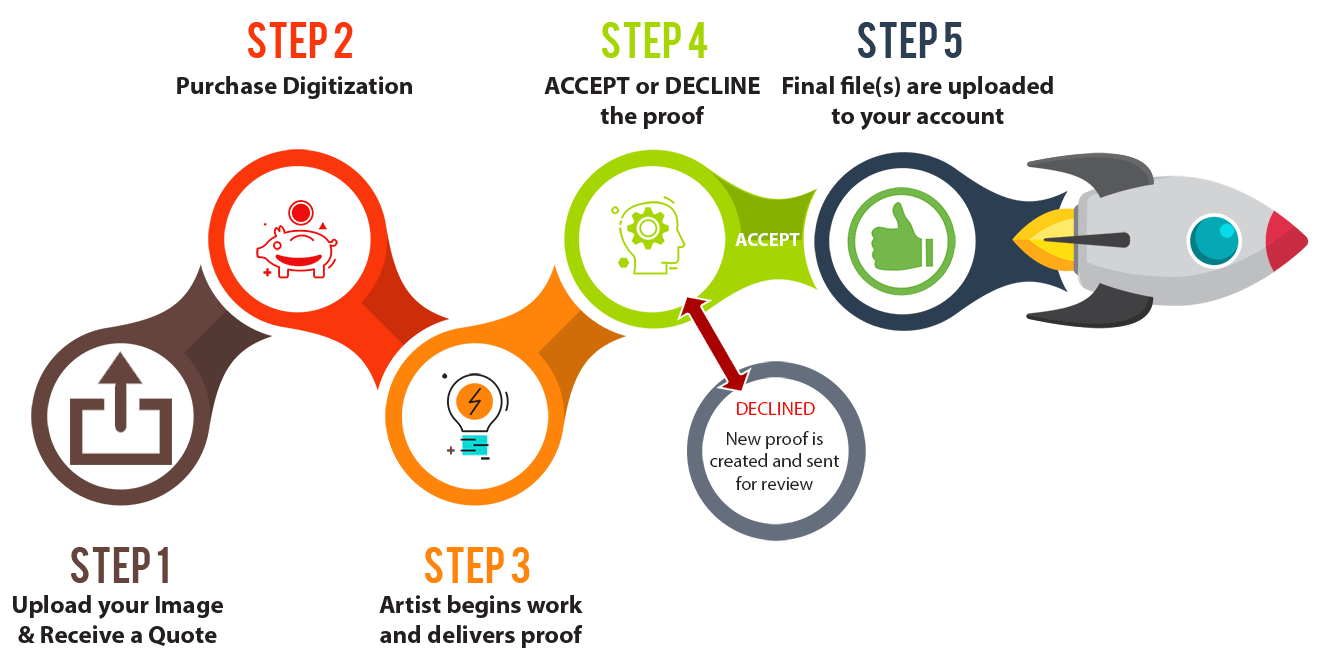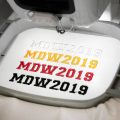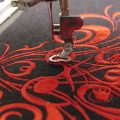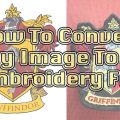There are several basic steps to follow when you’re learning how to digitize a logo for embroidery. The first step is to create a design. You can choose from three common stitch types: run stitch, satin stitch, and fill stitch. Fill stitch covers a large area and is used to cover small areas. The embroidery digitizer should decide which type of stitch to use and where the stitches should begin and end. When preparing your designs, you should also consider the type of fabric you’ll be using. For example, polar fleece and nylon have different textures and fibers, so the stitches should be arranged accordingly.
After selecting the design, you need to create a logo. It is best to use software designed for the task. A good software will allow you to change the image without leaving a blank space. Then, measure the space where you want to place the design so that it fits perfectly. Make sure to take measurements so that you’ll know the size of the space. It’s also important to keep the dimensions as accurate as possible.
Finally, you need to choose the color scheme. Choosing the colours is just as important as selecting the fabric and stitch type. The colors you choose will determine the quality of the digitized logo. For example, you’ll need to match thread colours to the design, and that means using a colour chart. For best results, use the same color scheme in all embroidery projects. Then, you’re ready to get started.
The next step is to find the software you’ll use. Wilcom is the most used software for digitizing. Once you’ve chosen the program, you can upload the design, set the size, and select the stitch type. Then, choose the thread colour to go with the design. Then, transfer your digitized file to your embroidery machine. Now, you’re ready to begin making your company’s embroidery logos!
Once you’ve selected a design that you’d like to digitize, you’ll need to carefully analyze the artwork. Embroidery digitization requires a lot of research and is more complex than you might think. Luckily, there are a variety of online resources that can help you with this task. It will be worth your while. You’ll also find that it’s a great investment in the future of your business.
Once you’ve chosen the design, you’re ready to digitize, you’ll need to decide on the format for the logo. A left-chest business logo, for example, can be easily digitized using a program for embroidery. Other designs, such as a full-color logo, can be difficult to do in this way. Those with a lot of details and a large design will need to have a professional digitizer create it for them.
After you’ve chosen a design that will be embroidered, you need to analyze it carefully. Often, it’s difficult to get a logo that works well on embroidery, so a professional must be hired to perform the task. If your logo is too complex, it’ll require too much time to resize it, so you can’t use it for another purpose. This process can take hours, but it will be worth it in the long run.
Once you’ve chosen the design, the next step is to choose a fabric and thread. Whether you choose fabric or thread, you’ll want to choose the right size for the logo and determine the desired stitching method. If you’re unsure about the material, try a few different stitches to ensure that everything is uniform. This will ensure that your design will look great on the final product.
Once you’ve decided on the fabric and logo, you can begin the process of digitizing a logo for embroidery. In this step, you’ll choose a stitching machine and upload the logo. Once the software has received your design, you’ll choose a pattern and size for the logo. After you’ve selected a fabric and design, you’ll need to select a thread color. After the final step, you’ll select the thread colors, the embroidery threads, and the stitches.







































No Comments